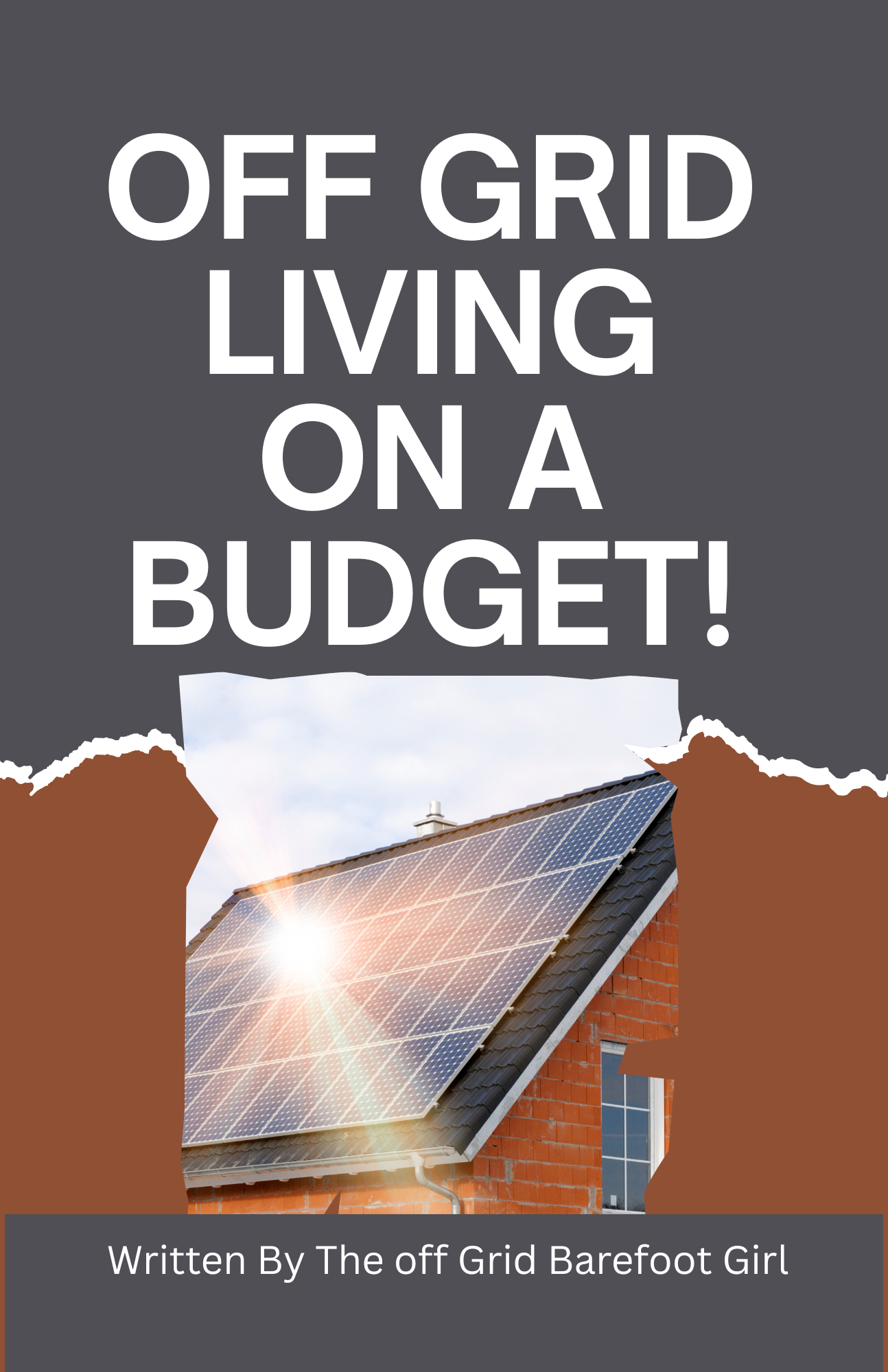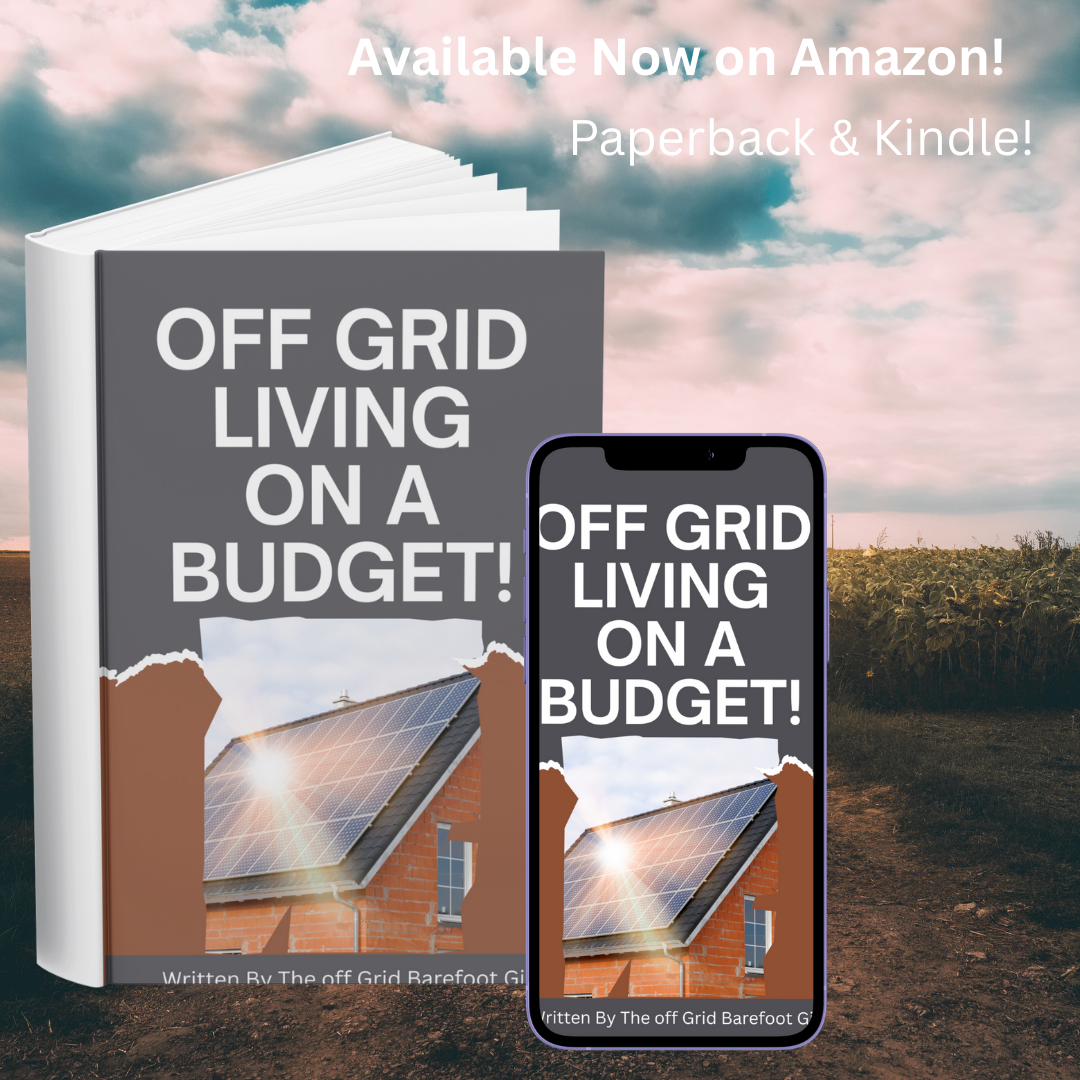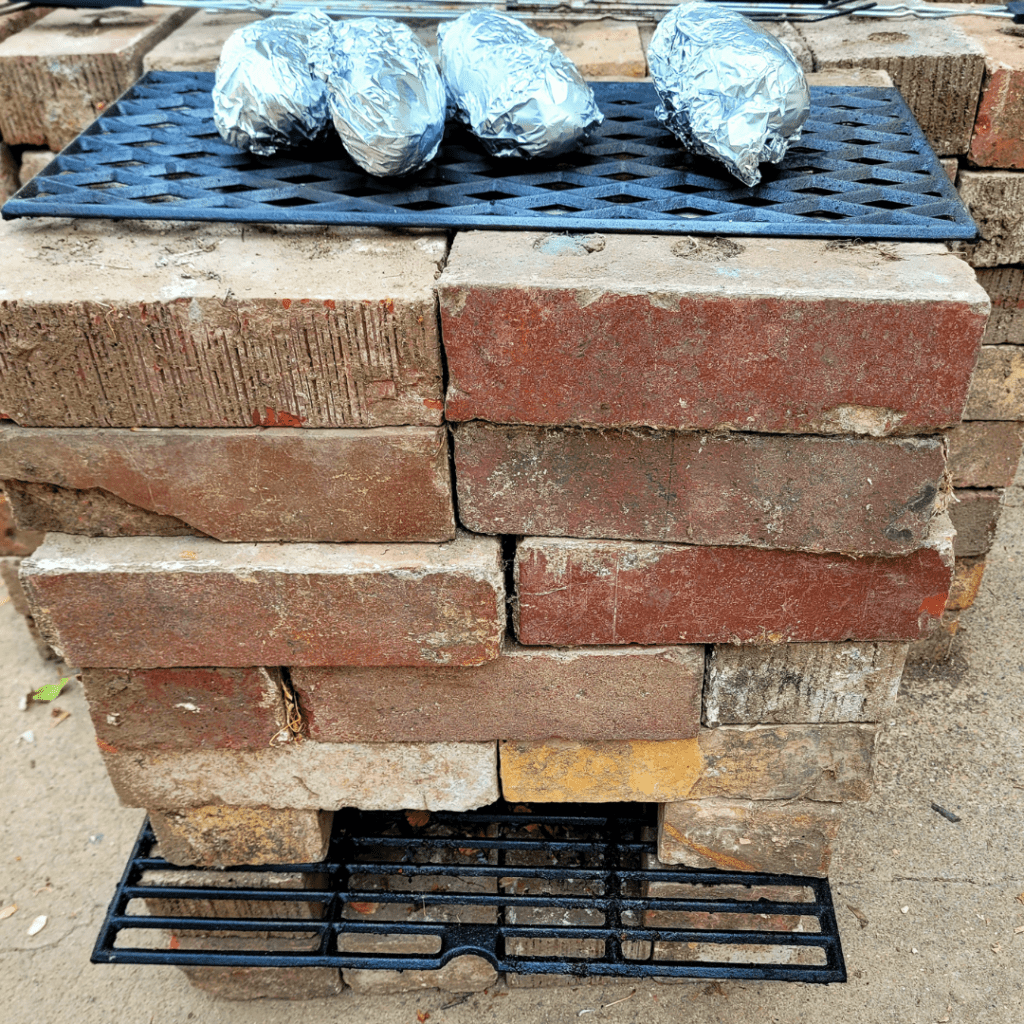Want the freedom of self-sufficiency without draining your wallet? You don’t need acres of land, piles of cash, or fancy gear to start living off the grid. In fact, the best off-grid lifestyle is built one small, affordable step at a time!
This guide will show you practical ways to stretch your budget while creating independence in food, water, and energy. Whether you live in a city apartment, a suburban neighborhood, or a country homestead, these strategies can work for you.
And if you want a deeper, step-by-step plan, I’ve put everything together in my book Off Grid Living on a Budget—your personal roadmap to a self-sufficient lifestyle without the financial stress.
Off Grid Living on a Budget

1. Grow Food Without Spending a Fortune
You don’t need a big farm or endless space to grow your own food. Start small and grow what you actually eat.
- Container gardening: Use buckets, crates, or even old tubs for herbs, tomatoes, and peppers.
- Vertical growing: Ladders, pallets, and hanging baskets can turn walls into food-producing areas.
- Fruit in small spaces: Strawberries in pots, dwarf fruit trees in containers, or berry bushes along fences.
Even a few plants can cut your grocery bill and give you a sense of independence.
2. Preserve and Store Food the Easy Way
Preserving food might sound intimidating, but it’s one of the cheapest ways to stretch your harvest.
- Freezing: Works great for berries, veggies, and even herbs.
- Dehydrating: Use a dehydrator or your oven to make long-lasting snacks.
- Canning on a budget: Reuse jars, watch for sales on lids, and start with simple recipes like jams or pickles.
When your shelves are stocked with homemade food, you’re not just saving money—you’re buying peace of mind.
3. Collect and Purify Water Affordably
Water is life, and you don’t need expensive systems to start being self-reliant.
- Rainwater catchment: Use barrels or repurposed containers to collect rain.
- Filtration: A basic gravity water filter or DIY sand filter can keep water safe.
- Storage: Rotate plastic jugs, glass jars, or food-grade buckets to build a reliable backup.
Even small steps in water independence can add huge security for your household.
4. Affordable Energy Solutions
Solar doesn’t have to cost thousands. Start small and grow your system as you go.
- Portable solar panels: Perfect for charging devices or running small lights.
- 12V setups: A battery, inverter, and small panel can power basic needs.
- Energy efficiency first: Weather stripping, draft stoppers, and LED lights reduce your need for power.
A little energy independence now can prevent big headaches later.
5. DIY Hacks to Make Your Home More Efficient
You don’t need to buy everything—you can build or repurpose.
- Use blankets or curtains as thermal barriers in winter.
- Make draft stoppers from old socks filled with rice.
- Repurpose pallets for shelves, compost bins, or furniture.
- Build a solar oven from cardboard and foil for outdoor cooking.
These simple hacks save money and make your home more resilient.
6. Stay Motivated and Avoid Beginner Mistakes
The hardest part of off-grid living is consistency.
- Start small: Don’t try to do everything at once.
- Set goals: One project a month keeps progress steady.
- Avoid perfectionism: Focus on improvement, not “Instagram-worthy” setups.
- Build community: Connect with others who share your goals—it makes the journey easier.
Mistakes will happen, but they’re part of the learning process. What matters is that each step takes you closer to freedom.
Your Next Step Toward Self-Sufficiency
Living off the grid doesn’t have to be expensive or overwhelming. Too often, people imagine it means buying acres of land, installing a full solar power system, or building a cabin in the woods from scratch. In reality, off-grid living is about taking small, intentional steps toward independence—right where you are.
When you start with the basics—growing a few vegetables in containers, collecting and storing water, or making simple DIY improvements to reduce your energy use—you’ll quickly see that it’s both affordable and empowering. Each project builds your skills and gives you the confidence to take on more.
The beauty of this approach is that you don’t have to wait until “someday” when you have more money, more land, or more time. You can start now, with what you already have. Over time, those small changes add up to big results: lower utility bills, a fuller pantry, and the peace of mind that comes with knowing you can provide for your family no matter what.
Living off the grid is not about perfection—it’s about progress. Every step you take saves money, teaches resilience, and brings you closer to true freedom.
If you’re ready to take this further, my book Off Grid Living on a Budget explores deeper into each of these topics with step-by-step guidance, tips, and personal lessons from my own barefoot journey toward self-sufficiency.
👉 Grab your copy of: Off Grid Living on a Budget!
Take control of your food, water, and energy—without overspending. Your self-sufficient journey starts now!
If you want a full overview of setting up your property and thriving off the grid, check out my guide to living on raw land.
Blessings,
The Off Grid Barefoot Girl





